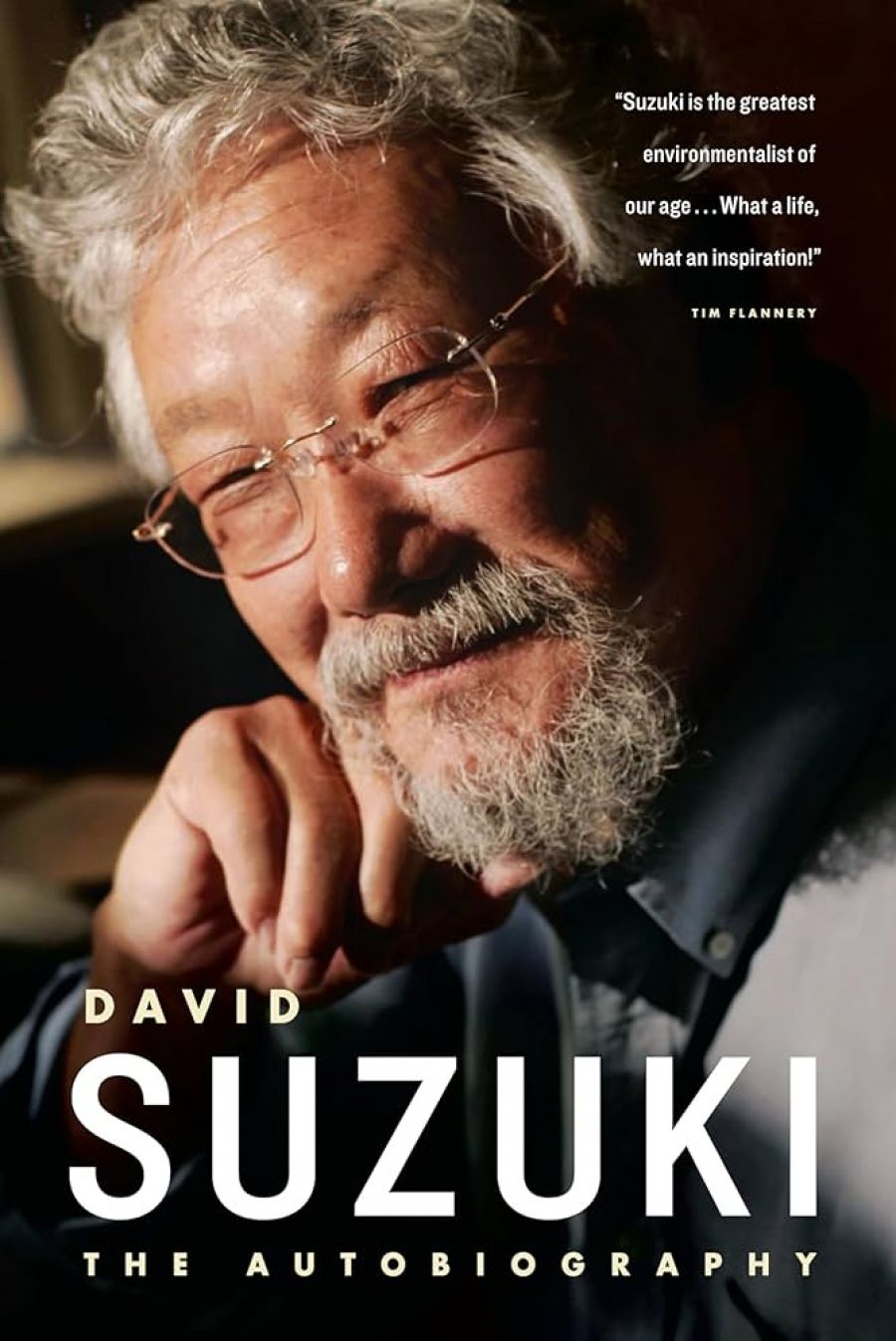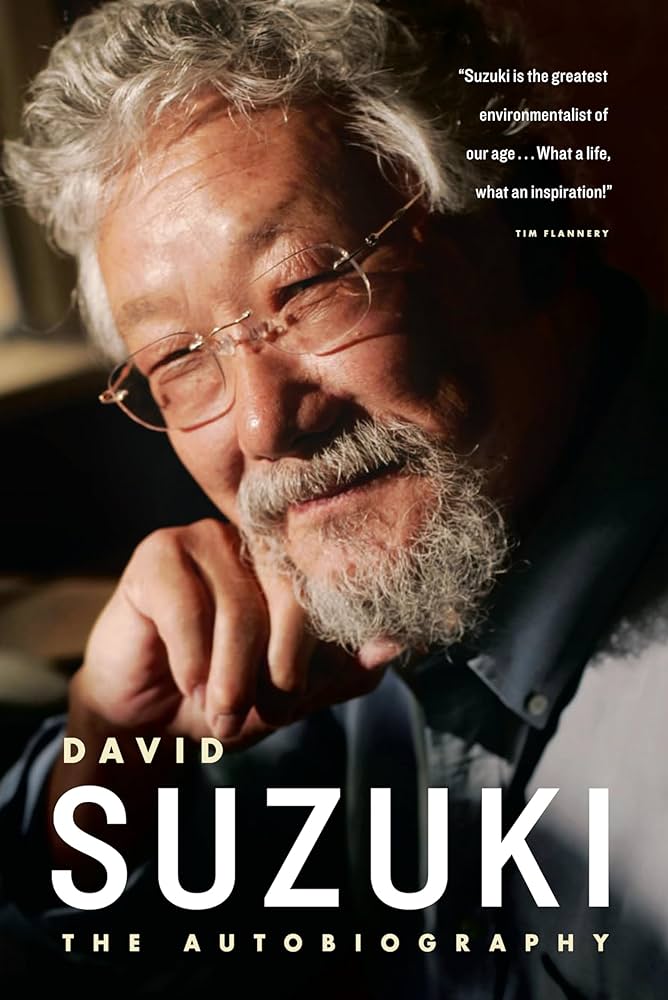
- Free Article: No
- Contents Category: Non-fiction
- Custom Article Title: Bits and pieces
- Review Article: Yes
- Article Title: Bits and pieces
- Online Only: No
- Custom Highlight Text:
David Suzuki is perhaps the best-known scientist living today. After developing an international reputation as a leading geneticist, he moved into science broadcasting and environmental activism. Why did he do this, and how did he become so successful? Now aged seventy, Suzuki explores these questions in his latest book, David Suzuki:The Autobiography. Suzuki’s previous auto-biographical work, now out of print, was aptly titled Metamorphosis: Stages in a Life (1986). Evolving from a collection of essays, it also charted his transformation from laboratory scientist to public educator of science and environmentalist. However, much has happened in the intervening twenty years. The new book mostly focuses on his environmental work in Canada and the Amazon, leading to the establishment of the David Suzuki Foundation in 1991, and his subsequent involvement in the Rio Earth Summit (1992) and the Kyoto Agreement on climate change (1997). In his preface, Suzuki writes that his story has been ‘created by selectively dredging up bits and pieces from the detritus of seventy years of life’. It is neither a story of the inner machinations of science nor the intrigues of a public personality in the media. Rather, Suzuki takes the position of an ‘elder’ in society, with the hope that his reflections on life may stir the reader to reconsider his or her own life.
- Book 1 Title: David Suzuki
- Book 1 Subtitle: The Autobiography
- Book 1 Biblio: Allen & Unwin, $29.95 pb, 405 pp, 1741147921
- Book 1 Cover Small (400 x 600):

- Book 1 Cover (800 x 1200):

The first chapter, provocatively entitled ‘My Happy Childhood in Racist British Columbia’, establishes the emotional foundation for much of Suzuki’s later life. As a third-generation Japanese-Canadian (a Sansei, unable to speak Japanese), Suzuki and his parents were exposed to prejudice simply on the basis of racial stereotype, culminating in internment under the Canadian War Measures Act in 1942. His childhood experiences left real scars, and the alienation he experienced then as a Canadian with the outward appearance of an Asian persists. ‘To this day,’ he says, ‘I don’t like the way I look on television and I don’t like watching myself on my own TV programs.’ The advantages and disadvantages of being a perennial outsider form a prominent sub-theme throughout the book.
At university, Suzuki ‘fell madly in love with the elegance and mathematical precision’ of genetics. The structure of DNA, the molecular basis of heredity, had only recently been worked out by James Watson and Francis Crick, laying the foundations for the revolutionary new field of molecular biology. However, unravelling these molecular mechanisms in conventional laboratory animals such as frogs or mice was all but impossible at that stage. Suzuki studied the molecular genetics of a much more convenient animal, the fruit fly. In 1963 he established his own laboratory at the University of British Columbia (UBC), and over the next fifteen years he became one of the world’s leading geneticists, with a truly extraordinary scientific output. One of his most influential discoveries was that changes in ambient temperature could alter the consequences of activating specific genes. Here, indeed, was direct experimental proof that both the genes (‘nature’) and the environment (‘nurture’) can affect development. Although these results are not discussed explicitly in The Autobiography, it seems clear to me that this conclusion contributed a core element of Suzuki’s world view.
After twenty-five years work, and still at the top of his game, Suzuki ceased direct involvement in genetics research. The reasons are complex, and Suzuki discusses his decision a couple of times in his book. On one hand, he was becoming more involved in the presentation of science to the public, mostly via radio on the Canadian Broadcasting Corporation (CBC). On the other, he was increasingly concerned with the ethical implications of the research enterprise within which he was a significant player. Underlying this concern was an acute awareness of the earlier misuse of genetics to support the eugenics movement, and, in turn, the development of racist social policy. For all of the promise offered by genetic engineering, Suzuki recognised that ‘our manipulative powers were great, but our knowledge of how the world works is so limited that we would not be able to anticipate all the consequences in the real world ... we had to be very cautious’.
If he were to enter the public domain and call for caution in the race to apply the new biotechnology for commercial or social ends, Suzuki felt that he had to be clean of any accusation of having a vested interest in the outcome of the debate. So, rather than withdraw from the debate, he withdrew from his laboratory research. Importantly, he did not reject the science itself, and he still revels in seeing his daughter carry out experiments to answer questions that had been thought to be unsolvable only a few years previously.
Although Suzuki remained a faculty member at UBC until his retirement in 2001, his media activities came to dominate his life. Most well known and influential of his many productions is his weekly CBC television show, The Nature of Things with David Suzuki, which began in 1979 and is still running after more than forty seasons. In addition to two chapters specifically on the subject, his work for radio and television permeates The Autobiography. Along the way, we get glimpses of the trials and tribulations of filming in remote locations, although with nothing like the detail in David Attenborough’s autobiographical Life on Air (2002). Suzuki is acutely aware of the limitations, opportunities and responsibilities of working in the media. As his reputation and authority grew, he began to use his shows to explore major issues facing contemporary society, such as the effects of clear-felling old-growth forests or the consequences of global warming.
More than half of The Autobiography is devoted to Suzuki’s life as an environmental activist. He recounts specific campaigns, mainly in Canada and the Amazon, and the establishment of the David Suzuki Foundation, led by his second wife, Tara Cullis. Characteristically, the lasting impressions from these accounts are not so much of Suzuki himself, but of the other people involved in the campaigns. Thus, in British Columbia, we read about Miles Richardson, the charismatic president of the Haida First Peoples Nation. In the Amazon, the story is strongly focused on Paiakan, a brilliant leader of the Kaiapo community. At the Rio Earth Summit, it is Suzuki’s daughter, Severn, then twelve years old, who commands centre stage.
Australia is Suzuki’s self-confessed second home. He has been coming here regularly since 1988 and owns a property in Port Douglas. As in Canada, where he has been adopted by several First Nations groups, he has been given an indigenous name, Karnemeyu, by the South Australian Kaurna people in recognition of his support. Suzuki devotes a chapter to down under, so it may be surprising that, apart from comments about meeting Peter Garrett, the degradation of the Great Barrier Reef, and a short but intense broadside on the current federal government’s lack of adherence to the Kyoto Protocol, Suzuki does not address environmental issues in Australia in more detail. However, Australians can learn much from this book. There are obvious parallels between the problems facing indigenous peoples as they attempt to bridge between traditional lifestyles in a threatened environment and the economic imperatives of post-industrial Western society. Suzuki reminds us that the close coalition between the Bush and Howard administrations extends to their rejection of the overwhelming scientific evidence for a looming climate disaster. (For more on this, see Chris Mooney’s The Republican War on Science, 2005.) And the failure to recognise the limits to exponential increases in resource utilisation will ultimately affect us all.
The Autobiography is an easy and engaging read. Suzuki’s straightforward writing style shows the benefits of half a lifetime of successful journalism. Nevertheless, as forewarned by the author himself, the book does not hang together very well as a continuous narrative. It really is a collection of ‘bits and pieces’, especially towards the end, when we get chapters on ‘Reflections on Science and Technology’, ‘A Culture of Celebrity’ and ‘Thoughts as I Grow Old’. Many of the ideas in these chapters have been explored more thoroughly (and with references) in A David Suzuki Collection:A Lifetime of Ideas (2003). Overall though, we do gain a strong impression of what this person David Suzuki is like. He does not hide his flaws. He is uncompromisingly honest and aims to work to the highest possible ethical standards. But above all, he is a family man, who, in the end, would just like to go fishing. What makes him different from almost any other father, brother or son with a fishing line, is that he sees the whole world as his family, and he wants everyone to be able to catch the fish of their dreams for generations to come.


Comments powered by CComment